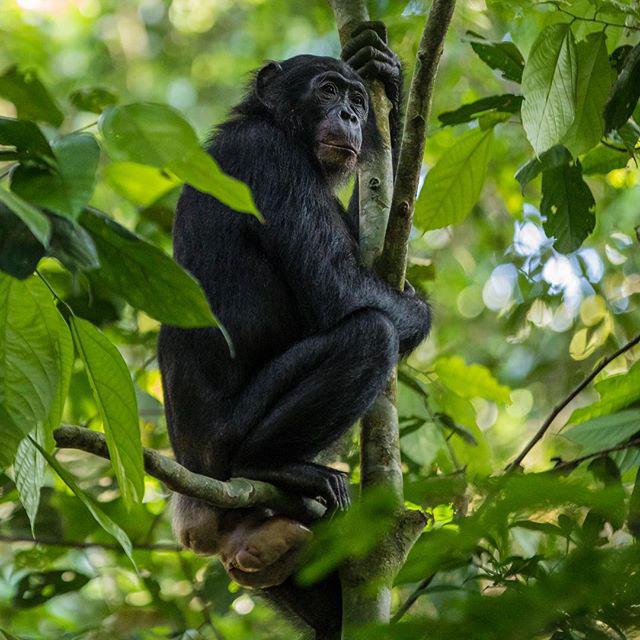Balemba Emmanuel Balagizi
Other projects
26 Jul 2019
Enhance Law Enforcement and Conservation Awareness at Iyondji Community Bonobo Reserve
Gazetted in 2012, Iyondji Community Bonobos Reserve has a potential to become one of the biodiversity hot spots in the Congo basin. Since its inception, the reserve has been under a lot of pressure from unregulated hunting exceeding sustainable harvest and illegal farming. The Congolese Wildlife Authority, a conservation wing of the government, has been installed in order to facilitate protected area management and to protect threatened species including the bonobo, Pan paniscus, which is endemic. The aim of this project is to conserve more than 800 bonobos; restore their habitats; to introduce positive and long term behavior changing within communities.

Bonobo Pan Paniscus. ©Thomas Nicolon.
The Maringa-Lopori-Wamba(MLW) landscape’s most precious ecosystems –and the livelihoods of local communities who depend on them –are at stake. Recent inventory report estimates that about 30% of forests of the protected area of Iyondji Community Bonobos Reserve (ICBR), a community-based protected area, have been completely deforested in the past years. Mitigation strategies attempt to reduce the level of impact and lessen the problem.
The targeted benefit will be a reduced rate of deforestation in bonobo habitat and elsewhere in ICBR. The practical conservation outputs from this work is a community-based conservation approach.
It involves assisting local communities in maintaining or strengthening their conservation-friendly practices (taboo eating bonobo) changing their conservation-unfriendly practices or internal threats (water poisoning), and collaboratively addressing external threats to biodiversity. Also try to promote the ownership and accountability of natural resources among local communities.
Educating children, empowering communities and protecting natural local environment to save our iconic bonobo from extinction.
The work is going to achieve: - Awareness raising to be carried out the community at different levels, for instance in 3 schools (Nsomo, Yangonde, Bongisa) through “Coaching4Conservation”. Bringing young people and conservation together through sport and art :
- Educating villagers through small core teams of eco-villagers to large numbers of community members in order to reduce human-wildlife conflict;
- Building local chiefs’ and key leaders capacity for environmental degradation and conflict prevention and resolution.
- Define an advocacy strategy to influence local state policy against illegal hunting gun factory and amnutions supply and increasing public understanding of human-wildlife conflict.